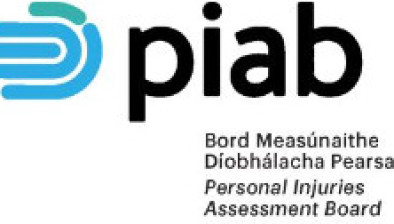Court of Appeal: €69,000 award upheld for injuries sustained in low-speed car accident

Killian Flood BL
The Court of Appeal has upheld a €69,000 award of damages for a man who suffered injuries as a result of a low-speed car accident.

About this case:
- Citation:[2021] IECA 171
- Judgment:
- Court:Court of Appeal
- Judge:Mr Justice Seamus Noonan
The defendant had claimed in the appeal that the impact of the collision was too slight for any injuries to be caused, arguing that only about €500 of damage was done to the plaintiff’s car.
However, the court held that the trial judge was perfectly entitled to take the view that she did on the evidence. It was held that the defendant had “staked her case” on the lack of damage to the plaintiff’s vehicle but that this could not be determinative of the injuries.
Further, the court held that the Book of Quantum had been correctly applied by the trial judge in the case.
Background
The plaintiff, Mr Louie Dunphy, was a taxi driver. In February 2017, his Mercedes E-Class was rear-ended by a Volkswagen Golf. The plaintiff’s car suffered minor bumper damage in the sum of €560, although the Golf suffered about €4000 in damage and was written off.
The Golf was driven by the defendant, Helen O’Sullivan, who claimed that it was a very slight impact and that her airbags did not deploy. However, she did accept that the collision was her fault.
Although the plaintiff returned to work immediately after the accident, he claimed to have pain in his shoulder, chest and lower back a few days later. He said he was unable to get out of bed as a result.
The plaintiff had no history of back pain, but repeatedly attended his doctor with back issues in the years after the collision. He said that there were days where he could not work due to the pain, but he agreed that his earnings were not affected by the injuries.
A consultant orthopaedic surgeon gave evidence that the plaintiff’s pain was intermittent but severe in nature. It was debilitating and would continue into the future. Further, it was said that the plaintiff had suffered from asymptomatic degenerations in his spine prior to the accident, and that the collision ultimately caused the back problems to become symptomatic.
The defendant’s expert medical evidence disputed that the collision caused the injury. It was a low-velocity accident, so the expert was surprised that a full recovery had not been made. However, it was accepted that the plaintiff’s back was “extremely stiff” with marked limitation in movement. The expert rejected the assertion that the degenerative wear became symptomatic due to the crash.
In the High Court, the trial judge held that she preferred the evidence of the plaintiff and his experts. It was noted that the back injury was not soft tissue damage and it was particularly relevant that the plaintiff did not have previous issues with his back.
The court also preferred the engineering evidence of the plaintiff and determined that the impact of the collision could have exceeded the threshold of velocity to result in the plaintiff’s injuries. It was accepted that a minor impact could cause damage to the occupant of a vehicle. The court awarded €50,000 in general damages to date, €15,000 for pain and suffering into the future and €4000 in special damages.
Court of Appeal
The defendant appealed the decision to the Court of Appeal. The notice of appeal was described as “uninformative,” but essentially claimed that the trial judge erred in holding that the evidence established that injuries could have been caused by the accident. The defendant emphasised the trivial nature of the collision and said that the court should adopt a common-sense view of the evidence, in accordance with Byrne v Ardenheath Company Limited [2017] IECA 293.
Delivering judgment in the case, Mr Justice Seamus Noonan held that a court was not “bound to slavishly follow the opinion of experts” and that Ardenheath determined that a court could adopt a common-sense view of evidence that was within the experience of ordinary people.
However, a court was also entitled to accept expert evidence which it found to be persuasive, subject to giving reasons why any particular expert’s evidence was preferred over another one. Importantly, Ardenheath was not an authority that “an appellate court is free to substitute its own “common sense” view of the expert evidence where the trial judge has accepted that evidence, has explained why he or she has done so and the evidence is manifestly credible,” the court said.
In the present case, Mr Justice Noonan held that the plaintiff’s engineer was “eminently qualified” and gave evidence in a “coherent and logical fashion.” His evidence was not contradicted to any significant degree by the defendant’s expert, the court said.
The medical evidence was central to the trial judge’s findings and the evidence of the plaintiff’s experts was consistent with an asymptomatic condition becoming symptomatic as a result of trauma. The trial judge was entitled to prefer this evidence.
The court acknowledged the potential for fraud in trivial or minor accidents, but that a plaintiff could also suffer real damage in a slight impact. The defendant made legitimate attempts to discredit the plaintiff’s evidence in cross-examination, but these attempts “largely failed.” The acceptance of the plaintiff’s credibility was “clearly open” to the trial judge in the case due to other supporting evidence, the court said.
The court noted that the defence was based on the lack of damage to the plaintiff’s car, which could not be determinative of whether the plaintiff suffered injury. The court said: “It cannot be doubted here, particularly having regard to the extent of the damage to the defendant’s vehicle, that a reasonably appreciable impact did occur.”
The court also felt that the defendant medical expert’s views were “coloured to a significant extent” by the minimal damage to the plaintiff’s car. It was “unfortunate” that the expert was not told about the extent of the damage to the defendant’s car.
Damages
The court marked its surprise that neither party had referred to the Book of Quantum in the written submissions in the appeal, particularly given that this was established to be the proper procedure in McKeown v. Crosby [2020] IECA 242.
In oral submissions, the defendant said that €50,000 in general damages was grossly excessive and that the true value was probably half of that figure. The court considered the categories of the Book of Quantum and held that the plaintiff’s injuries properly fell within the “moderately severe” category. The compensation range of the category was €32,100 to €55,700.
The court noted that the plaintiff was compensated for shoulder, neck, chest and back pain in the case. While the award may have been “on the generous side,” it was not disproportionate so as to amount to an error of law.
Conclusion
The court dismissed the appeal, stating its provisional view that costs should be awarded to the plaintiff.










